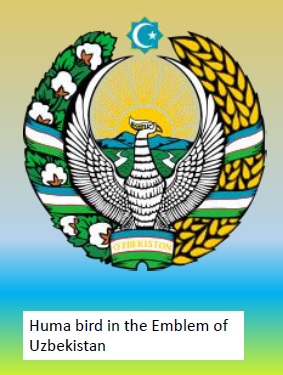HUMA – HEAVENLY BIRD – COURTESY: PAVITHRAN
Greatness of Huma bird as mentioned in Vedas is really
fascinating. This bird lives in the sky very high and never comes to the earth.
The bird lays its egg in the sky. The egg, while it is falling towards earth,
hatches and the young one opens its eyes in the heat of the atmospheric
pressure and flies on its own away from the earth towards its mother bird. Huma
bird lives always in the sky – never to have the feel of earth. Huma is indeed heavenly
bird.
There is a very interesting story about a mythological ‘Home
Bird’ in Oriental literature.
Though Sri Ramakrishna Paramahamsa said that it was a bird
mentioned in the Vedas, there are no references to such a bird in Vedic
literature. But there are indirect references elsewhere.
Ramakrishna pointed to Narendra (later Swami Vivekananda) and
compared him to a Homa bird. This is what happened in the case of Adi
Shankaracharya, Swami Vivekananda and the great Tamil saint Thiru Gnana
Sambandhar. Even when they were teenagers they realised God and taught the
world. They were like Homa birds. They never touched the surface of the earth
like us. They were always high- up in the sky.
Sri Ramakrishna said: “When they grow a little older they
feel the awakening of inner consciousness and go directly toward God. They come
to the world only to teach others. They never care for anything of the world.
They are never attached to women and gold.”
Is there a Homa bird? The ornithologists (those who study birds) say the Wandering Albatross doesn’t return to land for six years at a time; it uses the ocean water as its surface. Swifts always land on trees but not on the ground because of their weak legs. Arctic Terns fly nonstop for seven days and travel 11000 miles – literally from one pole to the other. Certain birds live most of the time in water or on top of the trees and so literally they don’t “land” on earth for several years. They come to ground only when they lay eggs. But what we understand about today’s 9000 different kinds of birds may not be complete. In our own times we lost several bird species like the Dodo. So once upon a time there might have been a Homa bird in the world.
We have indirect references to the Homa bird in Persian
literature. The Persian poets, Turkish poets and Sufi poets praise them as
divine birds. If it flies over someone’s head, that person will become a king,
they wrote. They described it as bird of paradise.
Though Iran is a Muslim country it has Homa bird as its
emblem for its airlines. The Homa bird in ancient Iranian monuments looks like
an eagle or Garuda. There are lot of references about eagles bringing the
divine Soma plant from the mountains in our Vedic literature. The English letters
S and H change place in Greek and Persian. For example – they named those
living on the banks of the river Sindhu as Hindus. Another example is the
number Six (Shashti) becomes Hexa in Greek. In the same way, it may be the case
that what we called the Soma bird is the mythical Homa bird. Whatever said in
the Vedas is repeated in the Persian Zoroastrian literature. Moreover, Hindu
literature also associates the Garuda bird (eagle) with Amrita (ambrosia).






Comments